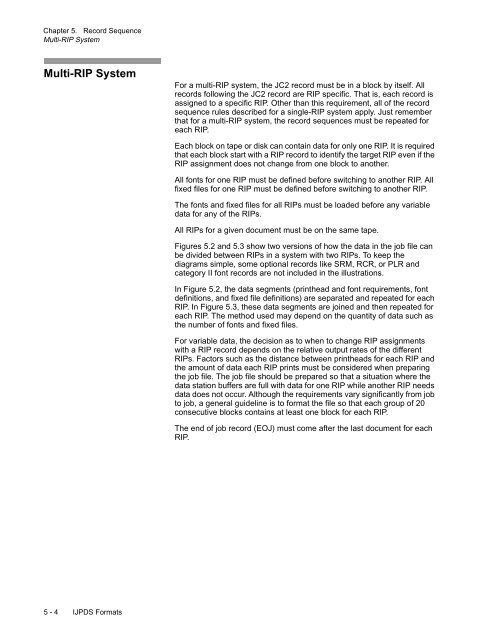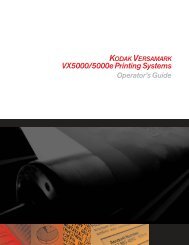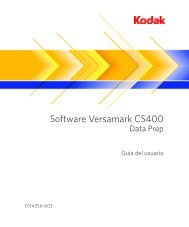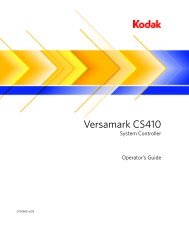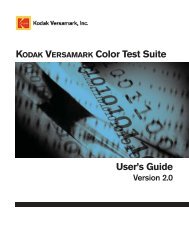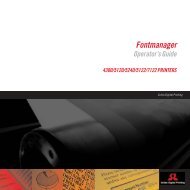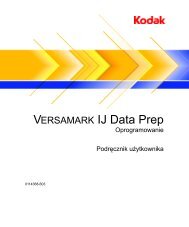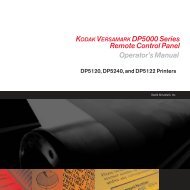You also want an ePaper? Increase the reach of your titles
YUMPU automatically turns print PDFs into web optimized ePapers that Google loves.
Chapter 5. Record Sequence<br />
Multi-RIP System<br />
Multi-RIP System<br />
5 - 4 IJPDS Formats<br />
For a multi-RIP system, the JC2 record must be in a block by itself. All<br />
records following the JC2 record are RIP specific. That is, each record is<br />
assigned to a specific RIP. Other than this requirement, all of the record<br />
sequence rules described for a single-RIP system apply. Just remember<br />
that for a multi-RIP system, the record sequences must be repeated for<br />
each RIP.<br />
Each block on tape or disk can contain data for only one RIP. It is required<br />
that each block start with a RIP record to identify the target RIP even if the<br />
RIP assignment does not change from one block to another.<br />
All fonts for one RIP must be defined before switching to another RIP. All<br />
fixed files for one RIP must be defined before switching to another RIP.<br />
The fonts and fixed files for all RIPs must be loaded before any variable<br />
data for any of the RIPs.<br />
All RIPs for a given document must be on the same tape.<br />
Figures 5.2 and 5.3 show two versions of how the data in the job file can<br />
be divided between RIPs in a system with two RIPs. To keep the<br />
diagrams simple, some optional records like SRM, RCR, or PLR and<br />
category II font records are not included in the illustrations.<br />
In Figure 5.2, the data segments (printhead and font requirements, font<br />
definitions, and fixed file definitions) are separated and repeated for each<br />
RIP. In Figure 5.3, these data segments are joined and then repeated for<br />
each RIP. The method used may depend on the quantity of data such as<br />
the number of fonts and fixed files.<br />
For variable data, the decision as to when to change RIP assignments<br />
with a RIP record depends on the relative output rates of the different<br />
RIPs. Factors such as the distance between printheads for each RIP and<br />
the amount of data each RIP prints must be considered when preparing<br />
the job file. The job file should be prepared so that a situation where the<br />
data station buffers are full with data for one RIP while another RIP needs<br />
data does not occur. Although the requirements vary significantly from job<br />
to job, a general guideline is to format the file so that each group of 20<br />
consecutive blocks contains at least one block for each RIP.<br />
The end of job record (EOJ) must come after the last document for each<br />
RIP.


